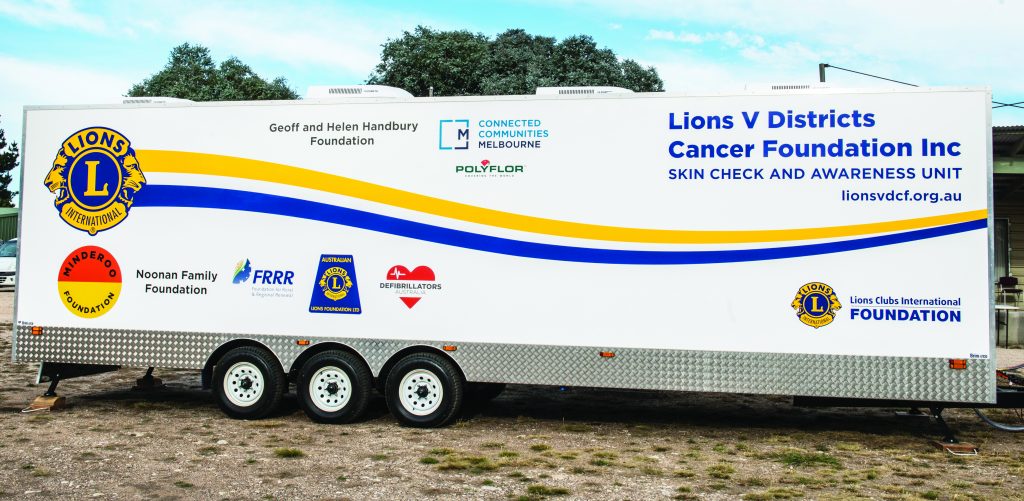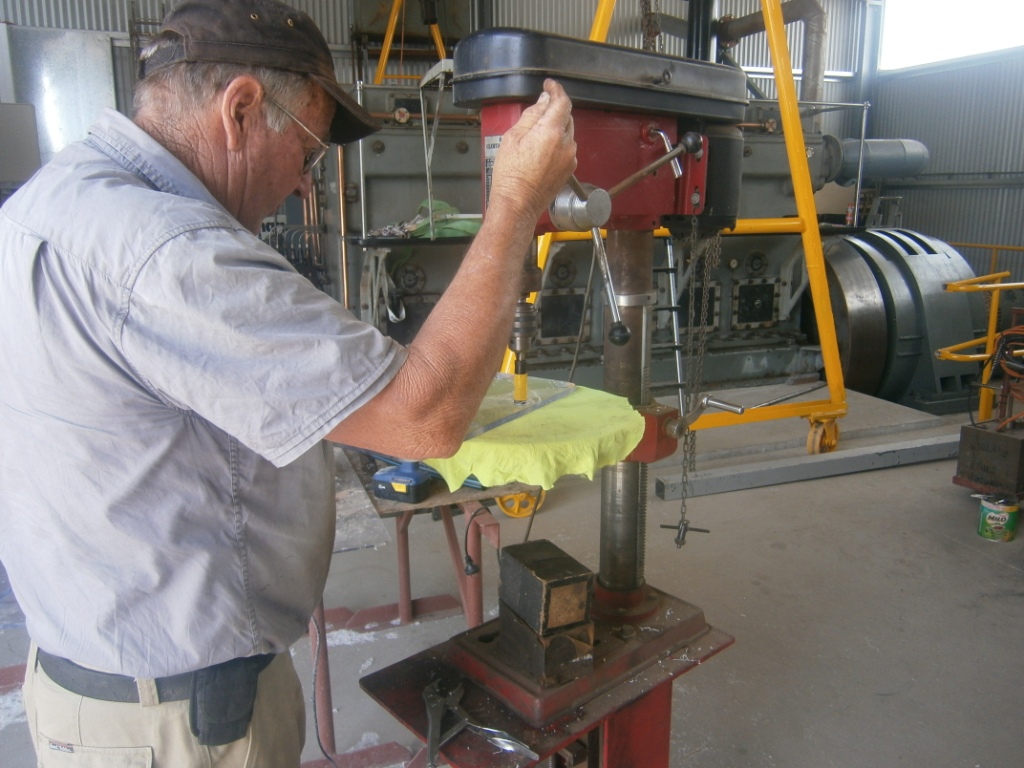Foundation for Rural & Regional Renewal (FRRR)
Four Victorian philanthropic organisations have joined forces in an exciting $5 million partnership with the Foundation for Rural & Regional Renewal (FRRR) that will strengthen the capacity and resilience of communities over the next five years.

Three Victorian communities will be named later this year, following a detailed process involving needs analysis, mapping key issues, causes of disruption and the funding landscape, and an exploration of community readiness for the investment.
The partnership comprises the Helen Macpherson Smith Trust, the Jack Brockhoff Foundation, The Ross Trust, and William Buckland Foundation. FRRR will deliver the program, following the success of its similar Investing in Rural Communities Futures program (IRCF) in NSW over the past five years.
The funding will enable local not-for-profits (NFPs) to become more confident and collaborative in their approach to improving and sustaining the vibrancy, resilience, and liveability of their communities, ultimately enabling them to thrive, not just survive, especially during times of natural disasters.
“Investing in and strengthening the social and economic fabric of Victorian rural communities fosters long-term resilience,” says the CEO of FRRR, Natalie Egleton. “We know that our model can deliver these outcomes, and the multi-year model builds a whole-of-community approach.”
The $5 million funding will be used to employ local facilitators, deliver capacity building activities for the local NFPs such as governance training, volunteer development, marketing and fundraising support, and events. Funds will also be allocated to the three communities via grants for priorities and for organisational capacity building. Evaluation is central to the program.
The NSW program
The NSW program started in 2018 after FRRR recognised that many grassroots organisations were ‘locked out’ of philanthropy and often unable to access opportunities to invest in their own organisational capacity due to their size, distance, financial capacity, and lack of staffing.
“Most of the NFP work that happens in small towns is volunteer run and there just isn’t any money or resources to help them be sustainable,” Natalie said. “Local leaders know what is going to make the biggest difference in their community and we knew that supporting local solutions would be key.”
The program commenced in Junee, Leeton, and Nambucca Valley with the support of Vincent Fairfax Family Foundation. The Snow Foundation and Bendigo Bank then joined to enable FRRR to take the program to Ulladulla, Batemans Bay, Nowra, and Bay & Basin. The Australian Government provided additional funding to expand the program in the Shoalhaven region and launch the program in Bega through their Black Summer Bushfire Recovery Program.
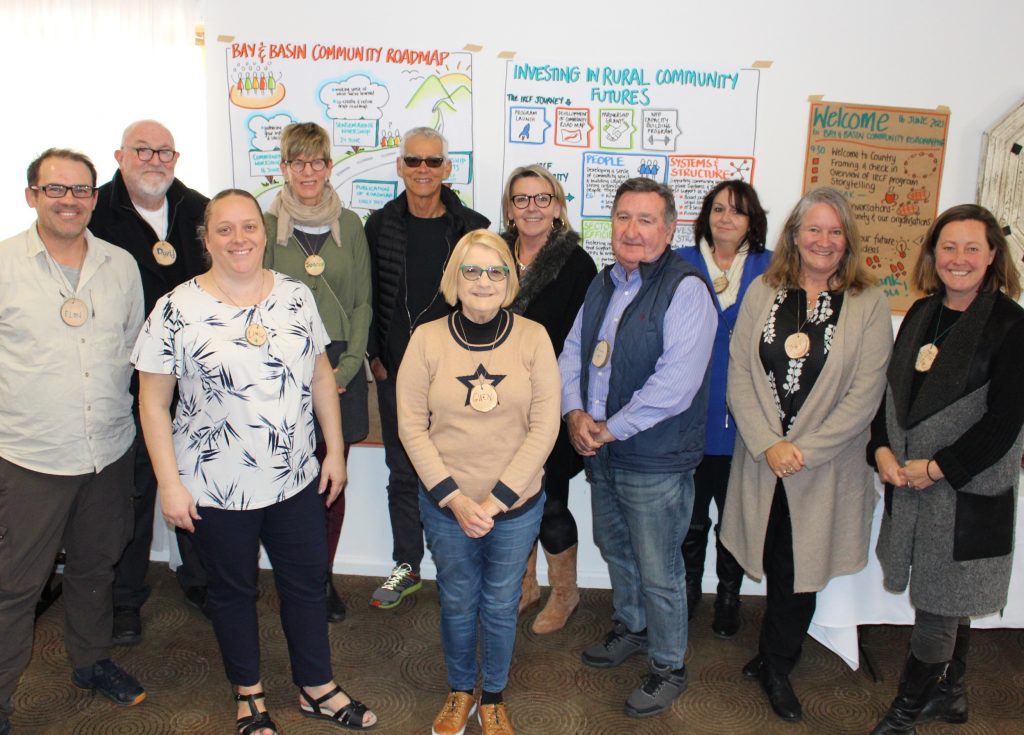
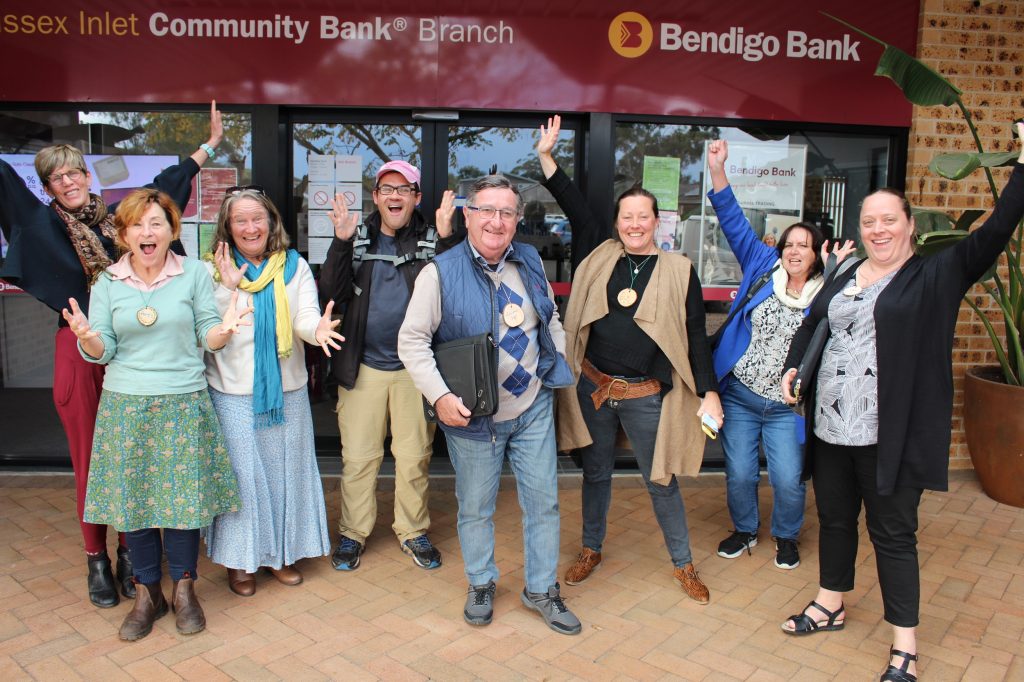

Evolution of the Victorian partnership
The plan to bring a similar program to Victoria began in late 2022 after The Ross Trust began discussions with FRRR and the Helen Macpherson Smith Trust. Conversations then began with the Jack Brockhoff Foundation and William Buckland Foundation. Importantly, the leaders in all these organisations had strong existing relationships and numerous granting collaborations with each other, as well as with FRRR.
“I could see that this program was about building the skills, resources and capacity of local not-for-profits – and that it was working,” said Sarah Hardy, the CEO of The Ross Trust. “It was also clear that any Victorian partnership would need a commitment of $5 million to get off the ground. That is a lot of money for any one mid-sized philanthropic, when we all have ongoing projects.”
Sarah said the positive and trusting relationships between the five organisations meant they were able to openly discuss whether it was a project that their trustees and directors would support.
The CEO at the Helen Macpherson Smith Trust, Debra Morgan, said the early conversations and resulting partnership benefited from like-minded organisations working together.
“We realised early that we couldn’t do anything this significant alone, and that working together would help us to affect better and longer-term change,” Debra said. “This collaboration sets a new bar in how we work together, and it’s certainly the longest-term project we have funded under our new strategy.”
Louise Kuramoto, the CEO of the Jack Brockhoff Foundation, said that it was the first time, other than a commemorative grant, the foundation had made a five-year commitment to a project.
“The philosophy behind this program is not unusual, but the amount and duration are,” Louise said. “The solid track record of FRRR gave all four funders the confidence to invest at such a scale. It’s wonderful that we can come together to support communities and the people in them.”
For the Grants Lead of William Buckland Foundation, Ferdi Hepworth, the program perfectly aligns with her organisation’s long commitment to country Victorians.
“We have had a long partnership with FRRR and more recently we’ve been funding a program where FRRR distributes small grants to communities, and we had already been talking about how we could better support them,” Ferdi said. “It was very easy to say yes to being part of this partnership.
“We often see governments and big business leading change, but it’s the people in the community who best know the ingredients required to help that community thrive. This project supports those people with the skills, knowledge, and confidence to work together to achieve change.”
After many emails, online and in-person meetings, visits to NSW communities, and discussions with their trustees and directors, the four funders set themselves a deadline of June this year to see if they could raise the $5 million to commence the program in July 2025. By April, they had done it.
“For four mid-sized philanthropic organisations to raise $5 million when we already have current commitments shocked us all, but in a good way,” Sarah said.
How the program will work in Victoria
FRRR will study past granting trends and community profiles and will map issues and disruptions occurring or on the horizon, as well as the funding landscape, to select the three communities. The process will also include community consultation, with a shortlisting process that will invite expressions of interest. Given the program is grounded in deep collaboration and co-design with each community, it is vital that there is a sense of readiness to embark on the five-year partnership.
Once communities are selected, a locally based community facilitator will work with the local NFP sector to scope priorities, gaps and opportunities that will be collated into a sector roadmap. The roadmap, which will be refreshed annually, will be the framework for activating capacity building activities and funding, and for monitoring progress, celebrating change, and adjusting priorities as needed.
Natalie from FRRR said she was confident many Victorian communities would be enthusiastic about the opportunity, adding that, like in NSW, it was likely the communities would be at very different starting points.
“Success is turning out to be different in each community, which is fine because the indicators we are interested in all focus on changes in mindset and sector collaboration to drive new and better opportunities for their communities – and that has been a major success,” Natalie said.
FRRR will employ a program manager who lives in Victoria and is familiar with key concerns and issues in the state. Local facilitators will also be employed in each community. Over time, it is expected that more than 20 people will be employed in the program. Staff and volunteers will benefit from training and professional development and possibly partnerships with councils, TAFEs and universities.
Deb Samuels is the People Portfolio Lead at FRRR and will oversee the Victorian project.
“We now have five years of NSW evaluation data and interviews and the recurring theme is that people in the communities feel much more empowered to make decisions and collaborate,” Deb said. “If they know a large grant opportunity is coming up, they know who to call to say, ‘let’s pool our efforts to apply’.”
Deb cited examples of success that could be replicated in Victoria, such as one NFP leader rallying to halt the closure of a local bank branch that was relied upon by vulnerable residents, and another leader now running for mayor.
“Local leaders involved in the IRCF program have shared they would not have had the confidence to do things like that in the past,” Deb said. Young people can also engage with the program and see themselves as an important part of the NFP sector.
“One of the best things somebody said to me is that ‘the funders believed in us and invested in us, and now we believe in ourselves and what we can do’.”
Australia has one of the highest skin cancer rates in the world, and more than 2,000 Australians die from this disease each year. If diagnosis occurs early, the fatality rate is significantly reduced. Outside Melbourne, skin specialists are limited with just 15 out of 199 dermatologists in Victoria holding clinics in eight country towns and centres. On top of this, there are no publicly funded skin cancer check programs in Victoria.
The Districts of Lions International in Victoria and Southern New South Wales identified a distinct need for a mobile skin cancer check and awareness unit to operate across Victoria and Southern NSW, and in particular, in remote areas and towns and centres not serviced, or fully serviced, by dermatologists or other skin specialists. In 2019, a group of trustees representing the five Lions Victorian districts and Southern NSW established the Lions V District Cancer Foundation Inc (LVDC). Its remit is to deliver improved health outcomes in rural areas by offering access to free skin cancer check-ups.
They received $25,000 in funds through FRRR’s Strengthening Rural Communities program, funded by The William Buckland Foundation (managed by Equity Trustees), to convert a van into a mobile screening clinic and purchase a truck to take it from town to town. The FRRR grant enabled the LVDC Foundation to leverage further grants, with the target total of $350,000 raised and exceeded with thanks to several corporate philanthropic donors, local Lions Club members and matched funding from the Lions Clubs International Foundation.
The screening van contains three examination areas equipped with dermascopes, enabling easier detection of suspect skin lesions. As Murray Baud, Assistant Treasurer & Foundation Trustee explained in the acquittal report, they canvassed and trained up volunteer dermoscopists who were willing to offer their services.
“With the appointments of a Screening Visit Coordinator and Driver Coordinator, the unit is now being booked by Lions Clubs across Victoria. The coordinators manage the process and identify screeners and driver logistics to maximise the efficiency of the unit as it travels. The unit was booked out for 2020 and has many reservations now in 2021 and even 2022.
“We took the mobile clinic to Canberra for the national Lions Convention, promoting a potential project for our northern states of NSW and Queensland. Media personality Deborah Hutton, who suffered from aggressive facial skin cancers, spoke in support of the project, and has now become an ambassador for the Lions Australia Skin Cancer projects.”
At the time writing, they’ve run 19 screening sessions in different rural towns, screening 1,005 people with 372 referrals to specialists.
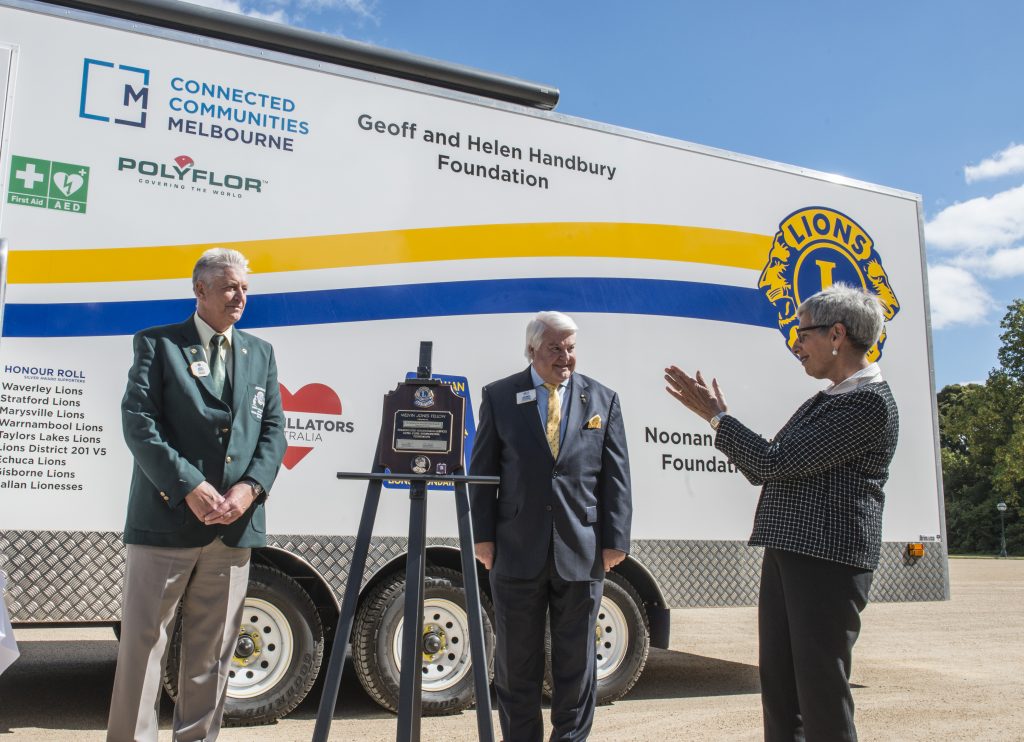
Photo credit: Tony Fawcett 
Photo credit: Tony Fawcett
Unlike most other youth music programs, CRASHENDO! Bairnsdale is not only about the tunes. Modelled after Venezuela’s National System of Youth and Children’s Orchestras and Choirs El Sistema Global, CRASHENDO! uses music education as a vehicle to help children develop their self-esteem, resilience, and social skills.
To support the purchase of new instruments and to help cover tuition fees, the CRASHENDO! team successfully applied to FRRR’s Strengthening Rural Communities program, receiving a $10,000 grant funded by The William Buckland Foundation (managed by Equity Trustees).
They sent us a detailed plan outlining how they planned to use the funds over the course of two years, and how excited they were to get on with their music classes, events, and other activities.
What they couldn’t have known, however, was that the years that followed – 2019-2020 – would be some of the most challenging years their community had ever experienced.
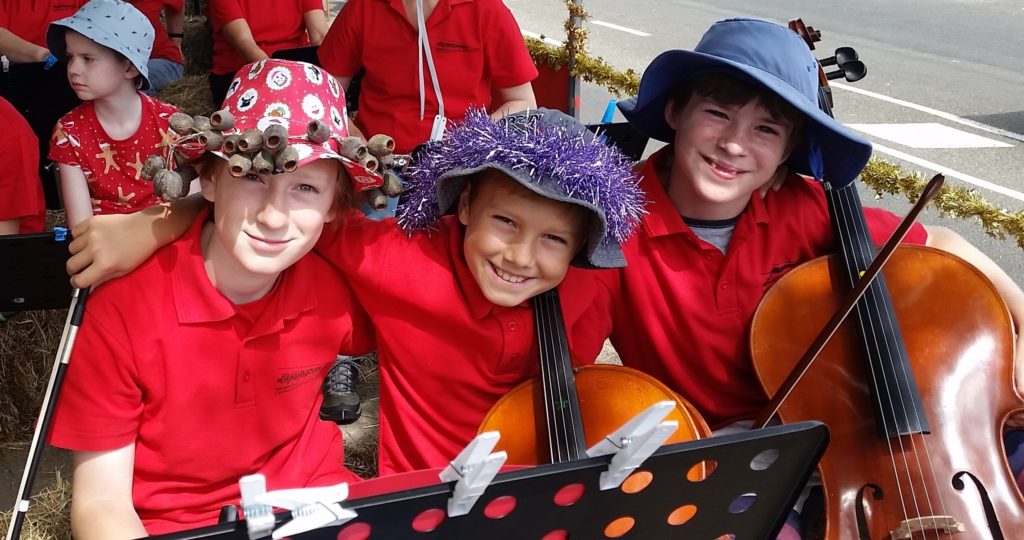
The CRASHENDO! program, which supports around 120 children in Bairnsdale and surrounds, had a great start to the year in 2019, with in-schools tuition, pre-orchestral, orchestra and early years programs in full swing. They also hosted several special events such as the Latrobe Orchestra Workshop and the Christmas Street Parade, both of which brought much joy to the community.
But as Christmas drew closer, so did the devastating bushfires that were already tearing through parts of NSW and VIC. And when the semester was set to begin again in the new year, the CRASHENDO! students had no school to return to.
The facilities, including all their instruments, were destroyed in the fires. Several families in the community had also lost their homes.
But despite these unimaginable challenges, children and tutors alike demonstrated once again the resilience and fighting community spirit we so often see in rural and regional Australia. The classes were moved to another school, and the children found some relief in returning to something familiar and normal – their music practice.
With support from their wonderful and engaging tutors, and by working together in groups, the children continued to develop both their musical skills and interpersonal skills.

But as we all know too well, 2020 brought with it its own set of challenges.
Soon after the COVID-19 virus reached Australian shores, life for the Bairnsdale community was once again turned upside-down. The community went through two remote learning periods (April – June and July – September), which meant all programs had to be moved online.
During this those unusual times, CRASHENDO! Bairnsdale Youth(ful) Orchestra (CBYO) reduced their sessions, halted expansion plans, and cancelled concerts and community performances.
The future was looking uncertain and bleak. But the CRASHENDO! team – both children and staff – were not about to give up that easily. They already knew the strength they had within them, especially when working together, so they kept their heads high, their Zoom cameras on and their smiles BIG – as they found new and engaging ways of delivering their programs.
Instead of having concerts, they produced videos. Instead of cancelling all Special Events, they scaled down the delivery time and incorporated video compilations. The creativity was flowing and proved to be a great learning experience across the board.
Watch a clip from the adorable video performance here.

“Although extremely challenging we have been extremely excited about the opportunity to learn new ways of delivering programs, administration and promotion,” Hilary Rigg, Crashendo! Bairnsdale Coordinator said.
She explained that while the number of participants decreased during online delivery, it also allowed them to widen the scope of musical styles and instruments on offer in the program, as well as the geographic area in which participants lived (across wider Gippsland and Melbourne). As tutors could dial in from anywhere, CRASHENDO! also grew their pool of highly skilled tutors, from areas including Melbourne, Geelong and even interstate.
“We have widened networks, forged new or deeper collaborations with other local musical groups and personnel, and kept musicians connected and playing. Hence, most importantly contributing to the well-being of our community!”
Hilary Rigg, Crashendo! Bairnsdale Coordinator
Did you know that one of the best ways to measure the health of a river is to look for microscopic water bugs? The Great Alpine Gallery has created the ‘Living River Water Bugs’ art installation along the Poets Walk at Tambo River to draw attention to these important little critters and engage the community in understanding how important they are.
When the Poets Walk was being updated for a relaunch, Gallery staff saw an opportunity to work with local artists and the local P-12 College to create an art installation that celebrated the micro bugs that make their river healthy.
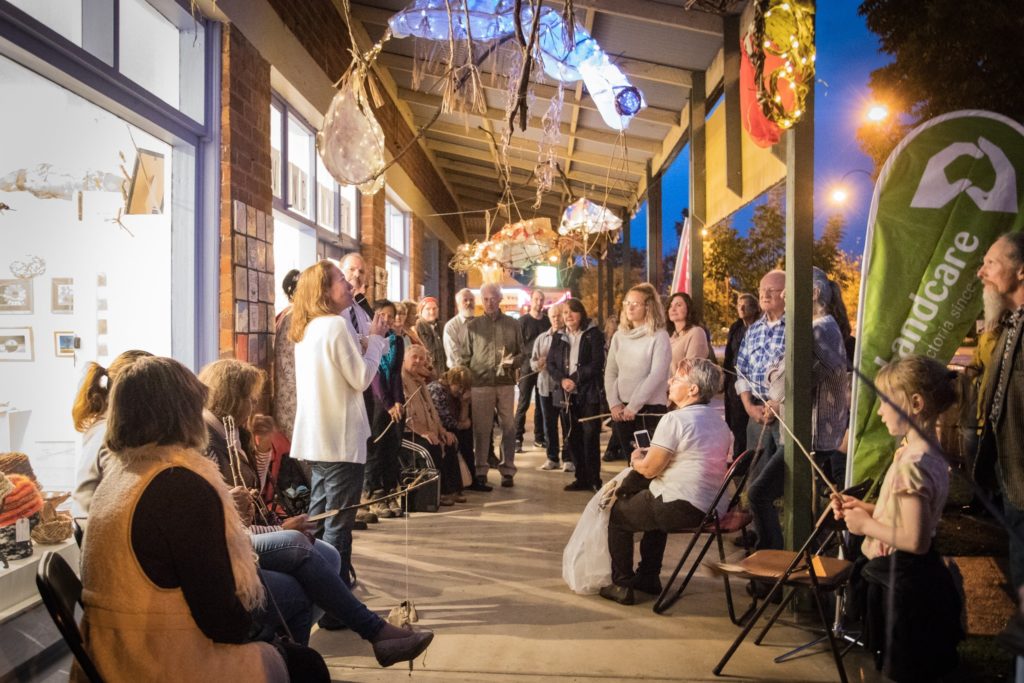
They also wanted to educate the town about the importance of making sure that the river water was clean and healthy. They hoped to engender community participation and ownership in keeping the river free of agricultural chemicals and other pollutants. This is particularly important for people to understand as agriculture is a major industry in the community.
A $5,000 grant from the William Buckland Foundation and Equity Trustees meant that the Gallery could commission artworks from nine local artists, with a mixture of established and emerging artists working together to create the installations. This created an opportunity for mentoring for emerging artists in the community.
Local school students took water samples from the river and identified the water bugs as part of their science program, and then gave this information to the artists. They worked together to design and create the water bug installations, using a combination of basket weaving techniques with local sourced materials, eco dyed fabrics and other sustainable resources that are native in the community. 70 local community members also engaged in workshops to learn more about the importance of river-care and help to create the sculptures.
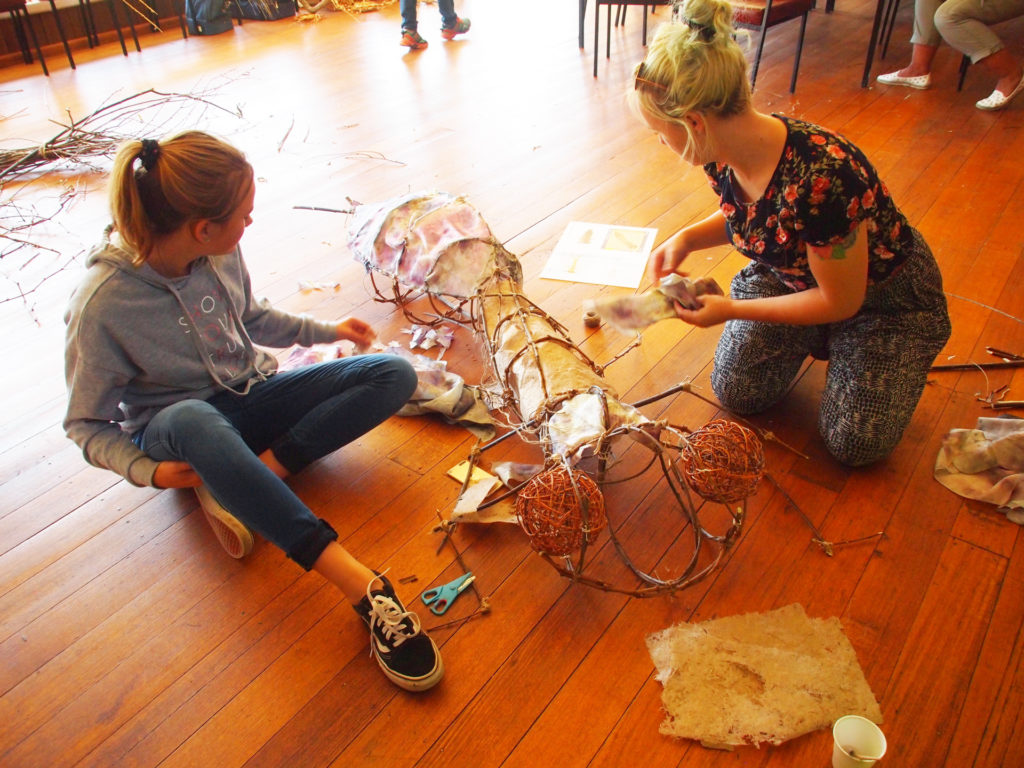
Heavy, and desperately needed, rain was forecast for the night of the launch, so the bugs were lit up and displayed in the gallery space. A river soundscape was played and a sideshow of photographs from the river were shown.
Tracey Johnson, President of the Great Alpine Gallery, said of the project;
“Living River Water Bugs has raised river-care awareness among the community. The engagement of the community in the joyous and fun-filled occasion of the launch was one of our proudest moments, along with raising awareness of the Poets Walk among the community as a wonderful asset they can enjoy now and in the coming years.”
Ever heard of Wunghnu? It is a rural Victoria town, 215kms north of Melbourne and has a population of 270 residents. Situated in the farming region of the Goulburn Valley, many locals have a strong passion for vintage machinery – so much so that the Goulburn Valley Vintage Tractor and Farm Machinery Club has been running for around 30 years and has 75 members.
All Club members have a common interest in vintage machinery, whether is be tractors, engines or old farm machinery and they meet once a month to discuss any issues and hold regular working bees to keep the facilities and sheds in good working order.
A grant from FRRR’s Small Grants for Rural Communities program, along with some keen negotiation skills and Club funds, helped to purchase a lathe and a sand blasting cabinet for the Clubs most recent vintage restoration project.
Every Wednesday, Club members come together to socialise and work on restoring a 800 Hp Crossley Engine. This engine is a significant part of the region’s history, servicing Radio Australia as a backup power supply generator many years ago.
The Club saved the 800 Hp Crossley Engine from scrap and had the huge task of restoring the mighty engine – the members had the skills but didn’t have the equipment they needed.
The lathe allowed Club members to fabricate and make new machinery parts, and after a lot of hard work and toil, the volunteers were very proud to see the engine running for the first time in 20 years. It can be viewed at the Club’s annual Vintage Rally.
The William Buckland Foundation in Victoria is proud to support this project through FRRR’s Small Grants for Rural Communities program and see a piece of the Goulburn Valley history restored and enjoyed by local residents.


